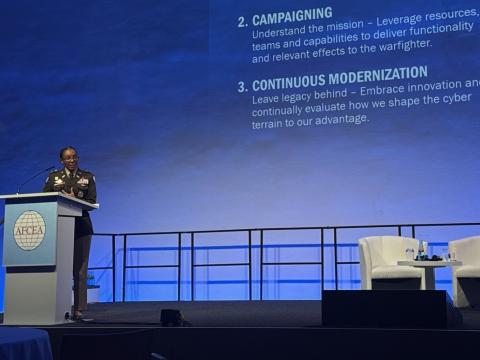President's Commentary: All Hands on Deck in the Asia-Pacific Region
While the world’s attention seems to be focused on the Middle East and the spillover effects of its conflicts, the Asia-Pacific region is enduring stresses that could have far-reaching consequences.
While the world’s attention seems to be focused on the Middle East and the spillover effects of its conflicts, the Asia-Pacific region is enduring stresses that could have far-reaching consequences. The area, which comprises half the Earth’s surface and two-thirds of its people, is facing threats to peace and economic growth that must be addressed by the one country that largely is viewed as an honest broker for security: the United States.
Challenges are raging across the region. The bellicose nature of North Korea’s leadership has increased with recent nuclear tests, missile launches and serious saber rattling. China has displayed increased aggression in the South China Sea, flexing its maritime muscles and testing other people’s wills across the region as it threatens freedom of navigation. The Islamic State of Iraq and the Levant (ISIL), which is being chased out of its territorial base in the Middle East, is spreading its tentacles far and wide and seeking favorable locations in the Muslim countries of the Pacific Rim. And a newly belligerent Russia, which has a long coastline fronting the Pacific, is looking to re-establish its global influence.
The strategic importance of the Asia-Pacific region cannot be overstated. More than $5 trillion in trade annually passes through it, with 20 percent constituting sea-based trade with the United States. Coalition operations over the past few years have clamped down on piracy, but it has not gone away. Keeping the Strait of Malacca free from that seaborne plague is vital, as 25 percent of the world’s oil and 50 percent of its natural gas pass through the critical chokepoint.
With seven of the world’s 10 largest militaries based in the area, maintaining security in the region is complicated by the lack of an overarching treaty organization such as NATO. The United States has bilateral alliances with five countries: Australia, Japan, South Korea, the Philippines and Thailand. But they must be treated as individual partners, not as alliance members. In both trade and regional security, the United States is fostering relationships with nations such as Indonesia, Malaysia, New Zealand, Singapore and Vietnam, to name a few.
The United States also is developing an improved relationship with India. The South Asian country fits into the U.S. national security framework and vice versa. The world’s two largest democracies share common beliefs and national interests, and their relationship is growing. A strong political, national security and economic relationship between India and the United States is critical for both. Increasingly, U.S. security planners are viewing the area as the Indo-Asia-Pacific region.
The United States must maintain the strongest possible presence in this part of the world. With its strategic rebalance to the region, the United States has demonstrated that this area is growing in significance to the world’s largest economy. It must continue to strengthen existing relationships and develop new ones among the dozens of nations that compose the vast area. And the United States must emphasize and visibly demonstrate its commitment there.
This begins with investing more heavily in defense spending, especially in naval forces to ensure freedom of navigation and uninhibited trade, along with nurturing strategic cooperation and partnerships. Each U.S. military service plays an important role in protecting the national security interests of our partners and allies. A strong military presence in the region is essential, and the United States must assure other nations that U.S. forces will be there if needed.
To further regional relationships, the Defense and State departments must generate an integrated strategy to deal with the bilateral alliances and national partnerships. This ensures that both political and military needs are met among the diverse nations. And the United States must have appropriate international trade agreements in place that make clear the penalties for crossing the line into unfair practices as well as national belligerence.
If the United States does not take these actions, the consequences to military and economic security will be detrimental. The region will see increased aggression by China as it tries to push its national boundaries beyond those accepted internationally and gain regional influence. North Korea also can be counted on to pursue its maniacal militarism. If current friendly nations decide the United States no longer is a reliable partner, then they might look elsewhere for security, opening the door for other nations to expand their influence.
A coherent strategy integrated across all elements of national power will be needed to ensure the peace and security of the Indo-Asia-Pacific region. The United States must clearly demonstrate its unmistakable commitment to that vital area.




Comments